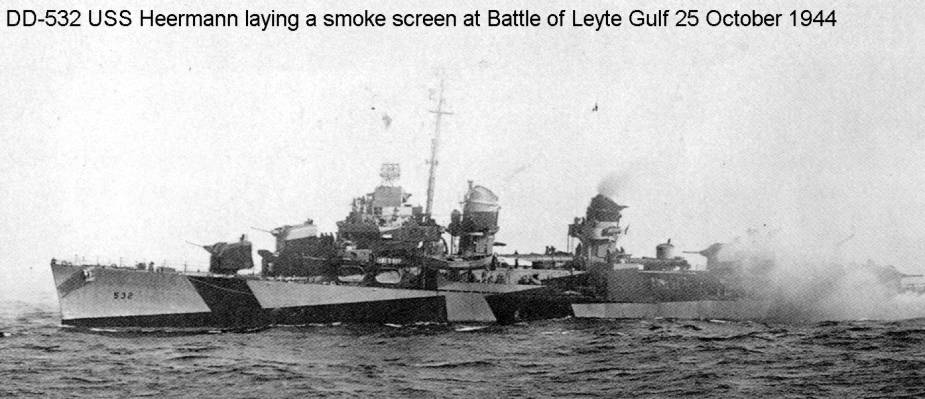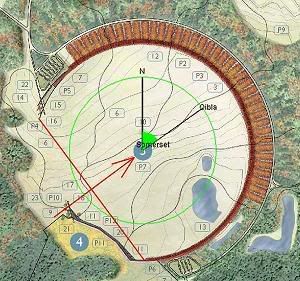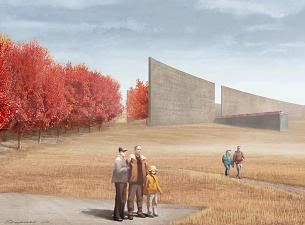First off, big time H/T to Mike the EE, who pointed me to the gouge for this post. Thanks, Mike!
Other news: Eagle1’s Sunday Ship History about making ships invisible…good read!
No pictures of this man, but his name is Lewis Heermann. Born in Germany August 3rd, 1779, he later ended up in the United States, and being commissioned as a Surgeon’s Mate in the newly formed US Navy on Feb 2nd, 1802. I would assume, that meant what we would refer to as a Physician’s Assistants today. I derived this from Section II of An Act to Provide a Naval Armament, March 18, 1794.
Below this point, there are edits. I wrote this this morning, using the net as the prime (ok, only) reference. It seems Lewis Heermann, besides being in a very famous naval battle across the sea from our shores, he also kept a journal that was used by Ian Toll in “Six Frigates, ” to fill in some details of the recapture and burning of the PHILADELPHIA.
What’ is Lewis Heermann’s claim to the US Navy’s history? He accompanied one Stephen Decatur to the vicinity of the harbor at Tripoli on Feb 16th, 1804, on the mission to burn the USS PHILADELPHIA, before that captured ship could be refitted and used by the Barbary Pirates. While Decatur and other sailors entered the harbor to actually recapture boarded the PHILADELPHIA, Heermann was left in command of the bomb ketch INTREPID, which was one of several the bomb ketches there in support of the operation that had slipped into the harbor with the boarding party, pretending to be a merchant. Quite an honor for a medical service corps officer to be put in command!
From Ian’s excellent documentary:
[…]
Catalano lost his nerve and shouted to Decatur to give the order to board. The lieutenant, seeing there was still a gap between the vessels, answered firmely: “No order to be obeyed but that of the Commanding Officer.” The crew restrained themselves for a few critical seconds as the INTREPID drifted closer. The guards seemed confused – some shouted that it was a trick, but others remained uncertain.When the ketch was directly alongside, just under the PHILDELPHIA’s forechains, Decatur shouted: “Board!”
“The effect was truly electric,” Surgeon’s Mate Lewsi Heermann later recalled. Not a man had been seen or heard tobreathe a moment before; at the next they hung on the ship’s side like cluster bees; and, in another instant, every man was aboard the frigate.”
[…]
After his service time in the Barbary Wars, Lewis Heermann took some time off to travel in Europe, but in 1808, returned and lobbied for better medical care for the sailors. His work resulted in Congress authorizing the construction of Naval Hospitals on several Naval Stations.
He later served in several posts in the Navy, including as the Fleet Surgeon to the Mediterranean Squadron in the 1830 time frame.
Lewis Heerman died in 1833.
 One ship has been named in honor of Lewis Heermann: USS HEERMANN (DD-532) or the FLETCHER Class destroyers.from the Dictionary of American Naval Fighting Ships:
One ship has been named in honor of Lewis Heermann: USS HEERMANN (DD-532) or the FLETCHER Class destroyers.from the Dictionary of American Naval Fighting Ships:
Heermann (DD-532) was launched 5 December 1942 by the Bethlehem Shipbuilding Co. of San Francisco; sponsored by Mrs. Edward B. Briggs, wife of Lt. E. B. Briggs, USCGR, great grandson of the namesake; and commissioned 6 July 1943, Cmdr. Dwight M. Agnew, USN, in command.
After shakedown training out of San Diego, Heermann joined the 5th Fleet 21 October 1943 for the assault on the Gilbert Islands, the second major offensive thrust in the Navy’s conquest of Japan’s far-flung Pacific empire. She arrived off Tarawa in Rear Admiral Harry W. Hill’s Southern Attack Force 20 November. Her guns sank a small enemy craft inside the lagoon and the next 2 days powerfully assisted troops ashore with close-in fire support. With the island secured, she returned to Pearl Harbor for voyage repairs and training which ended 23 January when she sailed in the screen of an attack transport reserve force. The ships steamed east of Kwajalein while Rear Admiral Turner’s Joint Expeditionary Force landed on that atoll 31 January. In the ensuing 2 weeks Heermann patrolled off Kwajalein and operated in the screen of escort carriers which were launching strikes in support of troops ashore. Then she steamed to Eniwetok Atoll where she joined in the preinvasion bombardment of Japan and Parry Islands, gave close fire support to the troops once they were ashore, and then patrolled off the atoll during mop-up operations.
Heermann set course first for Majuro Lagoon and then Purvis Bay, Florida Island, Solomons and reported to Commander 3d Fleet and Task Force 39, 18 March 1944. For the next month she divided her time between protecting troop and resupply convoys which were occupying Emirau Island and hunting enemy supply barges along the coast of New Hanover.
Back in Port Purvis 3 June, Heermann participated in the bombardment of a tank farm on Fangelawa Bay, New Ireland, 11 June, and then searched for submarines along sealanes leading from the Solomons towards the Admiralties, the Carolines, and the Marshall Islands until 26 June. The summer of 1944 found Heermann busy escorting Navy and Merchant shipping to rendezvous where they joined convoys bound for various ports. This duty took her to Espiritu Santo, New Hebrides Islands and Noumea, New Caledonia Island.
Heermann cleared Port Purvis 6 September 1944 with Rear Admiral William D. Sample’s escort carrier force that provided air support during the invasion of the Palau Islands. After replenishing at Seeadler Harbor, Admiralty Islands, she sortied 12 October 1944 with a fire support group for the liberation of the Philippine Islands.
[…]
Sometime in this period, CDR Amos Hathaway, USN, assumed command of HEERMANN. Some details of this man’s actions are in a prior post here.
[…]Heermann screened transports and landing ships safely to the beaches of Leyte and then joined Rear Admiral Thomas L. Sprague’s Escort Carrier Group (Task Group 77.4) which was made up of three escort carrier task units, known as the “Three Taffies” because of their voice calls: “Taffy 1”, “Taffy 2”, and “Taffy 3”. Destroyers Hoel and Johnston joined her in screening Rear Admiral Clifton A. P. Sprague’s unit, “Taffy 3” which also included his flagship F.anshaw Bay (CVE-70) and three other escort carriers.
Dawn of 25 October 1944 found “Taffy 3” east of Samar steaming north as the -Northern Air Support Group. “Taffy 2” was in the central position patrolling off the entrance to Leyte Gulf, and “Taffy 1” covered the Southern approaches to the Gulf some 130 miles to the southeast of Heermann’s “Taffy 3”. At 0645 “Taffy 3’s” lookouts observed antiaircraft fire to the northward and within 3 minutes, were under heavy fire from Japanese Admiral Kurita’s powerful Center Force of four battleships, 6 heavy cruisers, 2 light cruisers, and 11 destroyers. The battle off Samar was thus joined.
The only chance for survival of the little group of light American ships lay in slowing the advances of the enemy warships while withdrawing toward Leyte Gulf and hoped-for assistance. The carriers promptly launched their planes to attack the Japanese vessels, and the escorts promptly set to work generating smoke to hide the American ships.
Heermann, in a position of comparative safety on the disengaged side of the carriers at the start of the fight, steamed into the action at flank speed through the formation of “baby flattops” who, after launching their last planes, formed a rough circle as they turned toward Leyte Gulf. Since smoke and intermittent rain squalls had reduced visibility to less than 100 yards, it took alert and skillful seamanship to avoid colliding with friendly ships during the dash to battle. She backed emergency full to avoid destroyer escort Samuel B. Roberts and repeated the maneuver to miss destroyer Hoel as Heermann formed column on the screen flagship in preparation for a torpedo attack.
As she began the run, dye from enemy shells daubed the water nearby with circles of brilliant red, yellow, and green. Heermann replied to this challenge by pumping her 5-inch shells at one heavy cruiser, Chikuma, as she directed seven torpedoes at another, Haguro. When the second of these “fish” had left the tube, Heermann changed course to engage a column of four battleships whose shells began churning the water nearby. She trained her guns on Kongo, the column’s leader, at whom she launched three torpedoes. Then she quickly closed Haruna, the target of her last three torpedoes, which were launched from only 4,400 yards. Believing that one of the “fish” had hit the battleship, she nimbly dodged the salvoes which splashed in her wake as she retired. Japanese records claim that the battleship successfully evaded all of Heermann’s torpedoes, but they were slowed down in their pursuit of the American carriers. The giant, Yamato, with her monstrous 18.1-inch guns, was even forced out of the action altogether when, caught between two spreads, she reversed course for almost 10 minutes to escape being hit.
Heermann sped to the starboard quarter of the carrier formation to lay more concealing smoke and then charged back into the fight a few minutes later, placing herself boldly between the escort carriers and the column of four enemy heavy cruisers. Here she engaged Japanese cruiser Chikuma in a duel Which seriously damaged both ships. A series of 8-inch hits flooded the forward part of the plucky destroyer, pulling her bow down so far that her anchors were dragging in the water. One of her guns was knocked out but the others continued to pour a deadly stream of 5-inch shells at the cruiser, which also carne under heavy air attack during the engagement. The combined effect of Heermann’s guns and the bombs, torpedoes, and strafing from carrier-based planes was too much for Chikuma who tried to withdraw but sank during her flight.
As Chikuma turned away, heavy cruiser Tone turned her guns on Heermann who replied shell for shell until she reached a position suitable to resume laying smoke for the carriers. At this point plants from Admiral Stump’s “Taffy 2” swooped in to sting Tone so severely that she too broke off action and fled. The courageous attacks of the destroyers and aircraft thus saved the outgunned task groups.
Heermann retired to Kossol Passage for temporary repairs before getting underway for Mare Island and overhaul which was completed 15 January 1945. She then returned to the Western Pacific to join fast carrier task forces in raids against the Japanese mainland which helped to demoralize the Japanese people and to prepare them for surrender. During the fighting to take Iwo Jima, Heermann supported operations ashore by radar and antisubmarine picket duty. On 20 March 1945 she sank a small surface vessel and rescued seven of her crew after she went down. Seven days later she took part in the night bombardment of Minamo Daito Jima. During the Okinawa campaign she took several enemy planes under fire as she guarded carriers which provided air support for troops ashore. On 18 April wifih the assistance destroyers Mertz, MoCord, Collett, and Uhlmann and planes from aircraft carrier Bataan, Heermann sank Japanese submarine 1-56, a carrier of the dreaded “kaitens”, human-guided suicide torpedoes. She continued to support carrier operations off Okinawa until retiring to Leyte Gulf for replenishment and voyage repairs late in June. On 1 July she helped to screen the fast carrier force which devoted the ensuing 5 weeks to almost continuous air strikes and bombardment.
On 15 August 1945 Heermann was on radar picket station some 200 miles southeast of Tokyo when, several hours after the announcement of the end of hostilities, a suicide plane emerged from a cloud bank and began to dive in Heermann’s direction only to be splashed by the destroyer’s alert gunners in one of the final naval actions of World War II. In the following weeks Heermann operated in the screen of the fast carrier task force providing air cover and air^sea rescue service while General MacArthur and Admiral Nimitz were preparing to occupy Japan. She entered Tokyo Bay 16 September 1945 and remained in the area to support the occupation forces until 7 October when she sailed for the United States. She decommissioned at San Diego 12 June 1946.
Heermann remained in reserve at San Diego until re-commissioning 12 September 1951. After training in local waters and upkeep in San Francisco, she departed San Diego 4 January 1952 for her new base, Newport, R.I., where she arrived 23 January. She spent the year 1952 training in waters stretching from the New England coast to the Virginia Capes, followed by intensive antisubmarine warfare and fleet problems during winter cruising in the Caribbean. She returned to Newport to resume operation along the Northeastern seaboard. After a voyage to Plymouth, England, in June and July 1953, she participated in antisubmarine manuvers between Newport and the Virginia capes.
Heermann departed on a world cruise 3 December 1953. First she sailed for Tokosuka, Japan, by way of the Panama Canal, San Diego, and the Hawaiian Islands. After a 2-day replenishment in Tokosuka, she set course for Okinawa where she acted as part of the escort for 3d Marine Division amphibious warfare landings and conducted barrier patrol in support of the exercise. After more maneuvers took her to Korea, Iwo Jima, and the South Coast of Japan, she returned to Yokosuka which she cleared 22 May 1954 to resume her world cruise, calling at Hong Kong and Singapore on her way to the Suez Canal. In the Mediterranean she visited Port Said, Naples, Villa Franche, and Barcelona before returning to Newport 17 July 1954.
For the next year and a half Heermann participated in training exercises along the Atlantic coast. On 1 February She sailed to join the 6th Fleet in exercises along the coast of Lebanon, Israel and Egypt. In April she was invited by Prince Ranier to be in port for his wedding to Miss Grace Kelly 19-24 April 1956. She furnished a 40-man honor guard for the occasion. From Monaco she joined the 6th Fleet off Greece, and then departed for Fall River, Mass., where she arrived 28 May 1956. Heermann operated out of Newport until 6 November when she sailed for the Mediterranean where she proved to be a first-rate antisubmarine ship in joint exercises with the Italian Navy. After revisiting Monaco at the invitation of Prince Ranier and Princess Grace, she returned to Fall River 20 February 1957. She served as gunnery school-ship out of Newport until 30 June when she joined Badger in the screen of antisubmarine warfare carrier Leyte for 2 weeks of air operations for the training of Academy midshipmen. She decommissioned at Boston 20 December 1957 and was assigned to the Boston Group of the U.S. Atlantic Reserve Fleet. On 14 August 1961 she was transferred on a loan basis to the government of Argentina under terms of the Military Assistance Program. She serves in the Argentine Navy under the name Brown (D-20).
In addition to the Presidential Unit Citation, Heermann received the Philippine Republic Unit Citation Badge and nine battle stars for World War II service.






